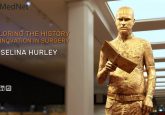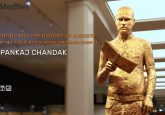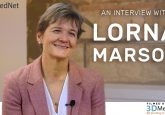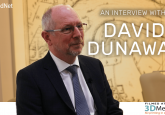Interdisciplinary approaches to surgery: 3D printing at Mayo Clinic
In this interview, Amy Alexander (Mayo Clinic, MN, USA) discusses how 3D printing is used for cases at Mayo Clinic as well as how an interdisciplinary team works together to provide the best possible care to patients on an individual basis.
Register as a member of 3DMedNet for exclusive 3DMedLIVE content
Biography
 Amy Alexander is a Senior Biomedical Engineer in the Mayo Clinic Department of Radiology’s Anatomic Modeling Lab in Rochester (MN, USA). In her role, Alexander converts 2D radiological images into 3D models and patient-specific surgical cutting guides. These life-size, patient-specific models and guides help surgeons from different specialties prepare for complex procedures. Additionally, these 3D prints form a communication bridge for patients regarding their personal surgical plan. Alexander holds a Bachelor of Science in Biomedical Engineering from the Milwaukee School of Engineering (WI, USA) and a Master of Science in Engineering Management from the Milwaukee School of Engineering Rader School of Business. Alexander has served on the SME Medical 3D Printing Workgroup (MI, USA) for over 3 years, is a member of the Radiological Society of North America’s 3D Printing in Medicine Special Interest Group (IL, USA) and is certified in Additive Manufacturing through SME. Alexander is an active member of Radiological Society of North America, Healthcare Information and Management Systems Society, and SME.
Amy Alexander is a Senior Biomedical Engineer in the Mayo Clinic Department of Radiology’s Anatomic Modeling Lab in Rochester (MN, USA). In her role, Alexander converts 2D radiological images into 3D models and patient-specific surgical cutting guides. These life-size, patient-specific models and guides help surgeons from different specialties prepare for complex procedures. Additionally, these 3D prints form a communication bridge for patients regarding their personal surgical plan. Alexander holds a Bachelor of Science in Biomedical Engineering from the Milwaukee School of Engineering (WI, USA) and a Master of Science in Engineering Management from the Milwaukee School of Engineering Rader School of Business. Alexander has served on the SME Medical 3D Printing Workgroup (MI, USA) for over 3 years, is a member of the Radiological Society of North America’s 3D Printing in Medicine Special Interest Group (IL, USA) and is certified in Additive Manufacturing through SME. Alexander is an active member of Radiological Society of North America, Healthcare Information and Management Systems Society, and SME.
“…the impetus for design and innovation should come from those using the tools in the operating room. By interfacing the engineers with the end users – the surgeons – and then leveraging advanced medical imaging and radiologist expertise, there’s really no limit to the specificity of each case, and the way that the surgical teams and the medical teams approach patient care will continue to be individualized.”
Alexander was interviewed at 3DMedLIVE 2019: 3D printing in surgery. To access more exclusive interviews and content from 3DMedLIVE 2019, watch this space on 3DMedNet >>
>> Find out more about 3DMedLIVE
Interview segments:
- Introduction [00:03]
- Using 3D printing at Mayo Clinic [00:36]
- Working with different specialities [01:40]
- The future of patient-centric modelling [02:46]
- The role of biomedical engineering in surgery [03:46]
- Assistive technologies for surgery [04:31]
You may also be interested in:
- Clinical engineering and innovative technologies for surgery with Giuseppe Isu
- The future of surgery: 3D printing, genomics and personalized care
- A biomedical engineer’s role in multidisciplinary pre-surgical planning and practice at the point-of-care
The opinions expressed in this feature are those of the interviewee and do not necessarily reflect the views of 3DMedNet or Future Science Group.





